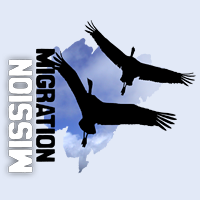La Cerdagne - Eyne - vendredi, 14. mars 2025
Si vous voulez nous aider à suivre encore et toujours ce magnifique spot d'Eyne, nous comptons sur votre soutien...
Merci pour votre participation, financière, morale ou physique, à vous de voir ! En espérant vous retrouver du 16/08 au 16/09...
Lien vers la campagne de dons : https://www.helloasso.com/associations/collectif-eyne/collectes/soutien-au-suivi-de-la-migration-postnuptiale-a-eyne-66
Campagne de dons Eyne 2025 !
posté par Yves Dubois, édité par Anonyme
Fort de la Revère - dimanche, 13. octobre 2024
Le 13 octorbe dernier, ornithologues de la LPO PACA, bénévoles, spotteurs et amoureux des oiseaux s’étaient donné rendez-vous au Parc naturel départemental de la Grande-Corniche pour la journée internationale des oiseaux migrateurs. C’est à l'observatoire ornithologique du Fort de la Revère que nous avons accueilli 74 visiteurs venus admirer le spectacle de la migration des oiseaux et en apprendre un peu plus sur ce phénomène. Chaque année, plus d’une centaine d’espèces d’oiseaux migrateurs, et plus de 120 000 individus, traversent le ciel des Alpes-Maritimes pour se diriger vers l’Afrique ou l’Espagne.
Un peu plus d’une centaine d’oiseaux a été observée lors de cette journée, les Pinsons des arbres étant les plus nombreux avec 41 individus comptés, suivis de prêt par les Hirondelles de fenêtre avec un vol de 38 individus. Les cris des pinsons des arbres nous permettent de les repérer à l'oreille avant de les voir. D'autres oiseaux étaient également de la partie : 3 Buses variables, 1 Faucon crecerelle, 4 Hirondelles rustiques, 31 Martinets pâles, 1 Milan royal, 11 Pigeons ramiers et 2 Serins Cini. Soleil (jusqu’à 15h) et convivialité étaient au rendez-vous !
Vous pouvez retrouver l'ensemble des espèces observées lors de cette journée sur Faune PACA : www.faune-paca.org.
Programme 2024

Octobre
-
Les Pigeons ramiers, le 27
Novembre
-
Les derniers migrateurs, le 3
Pour plus d'information sur l'observatoire ornithologique du Fort de la Revère rendez-vous sur notre page dédiée.
posté par Collectif Fort de La Revère, édité par Anonyme
Les Sommêtres - lundi, 23. septembre 2024
EuroBirdwatch 2024
suivit de la migration
samedi 5 octobre 2024 de 13h00 à 17h00
dimanche 6 octobre 2024 de 8h00 à 17h00
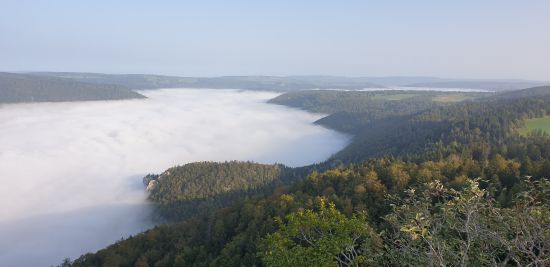
Document à télécharger :  EBW18Posterfrancais-2304.docx
EBW18Posterfrancais-2304.docx
Source : site EuroBirdwatch .ch / posté par Francey Charles, édité par Anonyme
Fort de la Revère - vendredi, 6. septembre 2024
 Le 1er septembre dernier, ornithologues de la LPO PACA, bénévoles, spotteurs et amoureux des oiseaux s’étaient donné rendez-vous au Parc naturel départemental de la Grande-Corniche pour l’ouverture de l'observatoire ornithologique du Fort de la Revère ! 36 visiteurs sont venus à notre rencontre pour admirer le spectacle de la migration des oiseaux et en apprendre un peu plus sur ce phénomène. Chaque année, plus d’une centaine d’espèces d’oiseaux migrateurs, et plus de 120 000 individus, traversent le ciel des Alpes-Maritimes pour se diriger vers l’Afrique ou l’Espagne.
Le 1er septembre dernier, ornithologues de la LPO PACA, bénévoles, spotteurs et amoureux des oiseaux s’étaient donné rendez-vous au Parc naturel départemental de la Grande-Corniche pour l’ouverture de l'observatoire ornithologique du Fort de la Revère ! 36 visiteurs sont venus à notre rencontre pour admirer le spectacle de la migration des oiseaux et en apprendre un peu plus sur ce phénomène. Chaque année, plus d’une centaine d’espèces d’oiseaux migrateurs, et plus de 120 000 individus, traversent le ciel des Alpes-Maritimes pour se diriger vers l’Afrique ou l’Espagne.
 Seulement 52 oiseaux ont été observés lors de cette journée, les Guêpiers d'Europe étant les plus nombreux avec un vol de 30 individus. Heureusement, leur chant fluté nous permets de les repérer à l'oreille avant de les voir. D'autres oiseaux étaient également de la partie : 3 Bondrées apivores, 1 Balbuzard pêcheur,1 Faucon crecerelle, 3 Hirondelles rustiques, 3 Hirondelles des fenêtres, 5 Martinets, 3 Pinsons des arbres ainsi que 2 Aigles bottés que l'on peut observer volant dans le sens contraire des autres oiseaux. C'est de la rétromigration !
Seulement 52 oiseaux ont été observés lors de cette journée, les Guêpiers d'Europe étant les plus nombreux avec un vol de 30 individus. Heureusement, leur chant fluté nous permets de les repérer à l'oreille avant de les voir. D'autres oiseaux étaient également de la partie : 3 Bondrées apivores, 1 Balbuzard pêcheur,1 Faucon crecerelle, 3 Hirondelles rustiques, 3 Hirondelles des fenêtres, 5 Martinets, 3 Pinsons des arbres ainsi que 2 Aigles bottés que l'on peut observer volant dans le sens contraire des autres oiseaux. C'est de la rétromigration !
Soleil et convivialité étaient au rendez-vous !
Prochaine animation : Les Guêpiers d’Europe, le dimanche 08 septembre de 8h à 17h.
En raison des conditions météo défavorables prévues dimanche 8 septembre,
le camp de migration de ce weekend est décalé au samedi 7 septembre 10h-18h.
Vous pouvez retrouver l'ensemble des espèces observées lors de cette journée sur Faune PACA : www.faune-paca.org.
Programme 2024
 Septembre
Septembre
-
Les Guêpiers d'Europe, les 1 et 8
-
Journées Européennes du patrimoine : les rapaces migrateurs, le 15
-
Les Circaètes, le 22
-
Les derniers rapaces migrateurs, le 29
Octobre
-
Eurobirdwatch et les hirondelles, le 6
-
Devenir "spotteur du camp de migration", le 13
-
Les Pinsons des arbres, le 20
-
Les Pigeons ramiers, le 27
Novembre
-
Les derniers migrateurs, le 3
Pour plus d'information sur l'observatoire ornithologique du Fort de la Revère rendez-vous sur notre page dédiée.
posté par Collectif Fort de La Revère, édité par Anonyme
Crêt des Roches - mercredi, 21. août 2024
Crêt des roches saison 2024
Mardi 20 août a débuté le suivi quotidien à la batterie des roches à Pont de Roide. Le groupe local LPO Pays de Montbéliard assure la coordination des bénévoles et l'accueil permanent du public. Grand bleu et chaleur normale pour le ballet classique mais toujours attractif des cigognes blanches, et dans l'oeil de la caméra de France 3; le fil tranquille des milans noirs, bondrées apivores, grands cormorans et quelques milans royaux précoces...
Bonne saison à tous les sites et spotteurs engagés !
Georges Lignier
coordinateur Groupe local LPO PM et suivi de migration
https://www.facebook.com/migration.pontderoide
posté par (archive) Lpo Franche-Comté, édité par Anonyme
La Cerdagne - Eyne - samedi, 15. juin 2024
Le bilan 2023 est dispo ici : https://cdnfiles2.biolovision.net/www.migraction.net/pdffiles/news/Bilan_du_suivi_des_oiseaux_migrateurs_sur_le_site_d-Eyne-La_CerdagneV1-1572.pdf !
Bilan 2023 Eyne
Source : Y. Dubois pour le Collectif Eyne / posté par Yves Dubois, édité par Anonyme
Col de l'Escrinet - mercredi, 14. février 2024
Le suivi de la migration au col de l'Escrinet reprendra samedi 17 février pendant 2 mois!
Venez dès le lever du soleil afin de compter les passereaux!
Ci-joint le rapport de l'an dernier...
Un mail de contact: felix.thevenet@lpo.fr
A bientôt sur le col!
Document à télécharger :  bilanmigrationescrinet2023-8701-1301.pdf
bilanmigrationescrinet2023-8701-1301.pdf
posté par Permanents LPO Rhône-Alpes, édité par Anonyme
Gruissan-Narbonne - lundi, 29. janvier 2024
Bonjour à toutes et tous,
Voici le bilan du suivi de la migration postnuptiale au Roc de Conilhac pour la saison 2023 (Gruissan-Narbonne).
Bonne lecture et à bientôt sur le Roc !
L'équipe du Roc de Conilhac
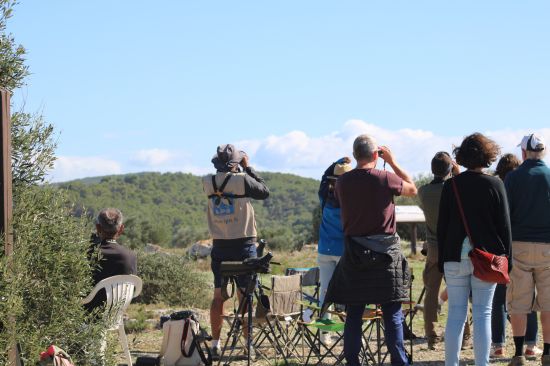
Document à télécharger :  Bulletin_migration_2023-8517.pdf
Bulletin_migration_2023-8517.pdf
posté par Collectif Lpo Aude, édité par Anonyme
Brassoir - mardi, 26. décembre 2023
La migration postnuptiale à Brassoir en 2023
Cette fin d'année nous amène a faire un bilan synthétique de la saison écoulée.
Au niveau statistique ce sont 90 jours de suivi entièrement bénévole effectués avec 580h10 de présence, du 6 aout au 29 novembre. Ce sont au total 9 observateurs réguliers qui ont assuré le suivi, ainsi que 21 visiteurs qui sont venus nous voir sur la saison. Au total 297176 oiseaux ont été comptabilisés en migration active.
Le résumé météorologique est tiré des Bulletins Climatiques Mensuels Régionaux des Hauts de France de Météo France. La saison fut venteuse et marquée par un flux de secteur ouest marqué dès septembre, ainsi que des précipitations constantes dès la fin d'octobre. Le 2 novembre la tempête CIARAN ballaie la région avec 117 km/h à la station de Plessis Belleville (60), Elle est suivie par DOMINGOS les 5 et 6 , ELISA le 9, et FREDERICO le 16 , amenant beaucoup de pluie : il est tombé trois fois la quantité moyenne mensuelle en novembre (398mm). Les premières gelées n'arriveront que dans la dernière décade, avec le basculement des vents au secteur nord.
Cette année a vu tomber de nombreux records saisonniers pour les espèces suivantes :
Grande aigrette (n=74), Cigogne blanche (n=1511), Bondrée apivore (n=493), Busard pâle (n=3), Busard des roseaux (n=340), Balbuzard pêcheur (n=17), Faucon crécerelle(n=76), Faucon émerillon (n=33), Goéland leucophée (n=508), Goéland brun (n=875), Pluvier doré (n=18093), Pinson du nord (n=3542)
Cinq nouvelles espèces ont été observées sur le site : Canard pilet, Pluvier guignard, Goéland cendré, Guifette noire, Coucou gris en halte.Pour les espèces les plus remarquables, notons un labbe à longue queue juvénile le 25 aout,1 circaète le 16 septembre en vol nord, et 3 pluviers argenté le 22 octobre
Certaines journées resteront mémorables dans l'historique de Brassoir :
-
Un passage exceptionnel de 281 bondrées le 6 septembre
-
362 cigognes blanche en cinq vols le 4 septembre
-
Deux passages de goélands brun à la faveur des tempêtes de novembre : 197 le 6 et 212 le 11 novembre
-
Un gros mouvement de pluviers doré fin novembre avec un pic à 4472 individus le 19.
Je remercie les observateurs/trices m'ayant accompagné cette année : Thimotée Baudequin, Patrick Crnkovic, Julia Duran, Jean Paul Fagard, Richard Kasprzyk, Rodolphe Leroy,Pascal Malignat, Alain Rouge, Martial Votte.
Rendez vous est déjà pris pour l'année prochaine avec des sessions de formation organisées sur place par Picardie Nature.
Henry de Lestanville
pour le Collectif de Brassoir
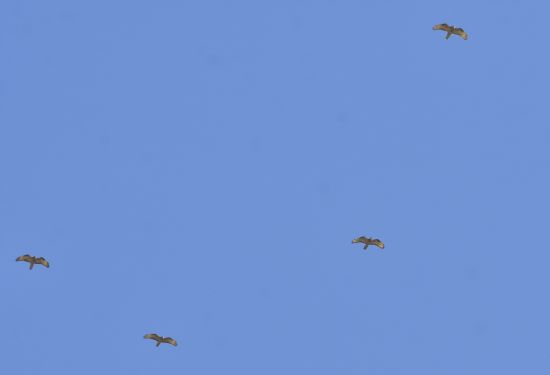
posté par Henry de Lestanville, édité par Anonyme
Fort de la Revère - mercredi, 25. octobre 2023
22 octobre : la migration des oiseaux au Fort de la Revère.
Encore une belle journée passée au Fort de la Revère sur le Parc naturel départemental de la Grande Corniche ce dimanche 22 octobre. La migration des oiseaux touche petit à petit à sa fin et ornithologues de la LPO, bénévoles, spotteurs et visiteurs ont pu observer encore quelques oiseaux entamant leur long voyage vers leur site d’hivernage.
Au total, 91 visiteurs sont venus rejoindre l’équipe d’observateurs et ont pu en apprendre davantage sur le phénomène de la migration des oiseaux.
2044 Pigeons ramiers sont passés au-dessus du Fort, mais aussi 420 Pinsons des arbres. Encore quelques rapaces étaient au rendez-vous comme 1 Busard des roseaux, 2 Buses variables, 2 Eperviers d’Europe et 1 Aigle botté.
Vous pouvez retrouver l'ensemble des espèces observées lors de cette journée sur Faune PACA : www.faune-paca.org.
Rendez-vous dimanche prochain pour l'observation des derniers migrateurs !
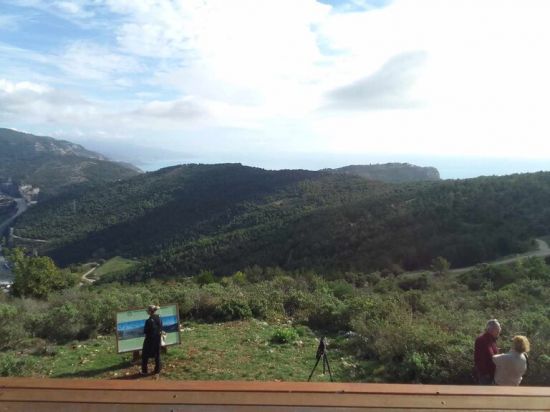
posté par Collectif Fort de La Revère, édité par Anonyme
 Le 1er septembre dernier, ornithologues de la LPO PACA, bénévoles, spotteurs et amoureux des oiseaux s’étaient donné rendez-vous au Parc naturel départemental de la Grande-Corniche pour l’ouverture de l'observatoire ornithologique du Fort de la Revère ! 36 visiteurs sont venus à notre rencontre pour admirer le spectacle de la migration des oiseaux et en apprendre un peu plus sur ce phénomène. Chaque année, plus d’une centaine d’espèces d’oiseaux migrateurs, et plus de 120 000 individus, traversent le ciel des Alpes-Maritimes pour se diriger vers l’Afrique ou l’Espagne.
Le 1er septembre dernier, ornithologues de la LPO PACA, bénévoles, spotteurs et amoureux des oiseaux s’étaient donné rendez-vous au Parc naturel départemental de la Grande-Corniche pour l’ouverture de l'observatoire ornithologique du Fort de la Revère ! 36 visiteurs sont venus à notre rencontre pour admirer le spectacle de la migration des oiseaux et en apprendre un peu plus sur ce phénomène. Chaque année, plus d’une centaine d’espèces d’oiseaux migrateurs, et plus de 120 000 individus, traversent le ciel des Alpes-Maritimes pour se diriger vers l’Afrique ou l’Espagne. Seulement 52 oiseaux ont été observés lors de cette journée, les Guêpiers d'Europe étant les plus nombreux avec un vol de 30 individus. Heureusement, leur chant fluté nous permets de les repérer à l'oreille avant de les voir. D'autres oiseaux étaient également de la partie : 3 Bondrées apivores, 1 Balbuzard pêcheur,1 Faucon crecerelle, 3 Hirondelles rustiques, 3 Hirondelles des fenêtres, 5 Martinets, 3 Pinsons des arbres ainsi que 2 Aigles bottés que l'on peut observer volant dans le sens contraire des autres oiseaux. C'est de la rétromigration !
Seulement 52 oiseaux ont été observés lors de cette journée, les Guêpiers d'Europe étant les plus nombreux avec un vol de 30 individus. Heureusement, leur chant fluté nous permets de les repérer à l'oreille avant de les voir. D'autres oiseaux étaient également de la partie : 3 Bondrées apivores, 1 Balbuzard pêcheur,1 Faucon crecerelle, 3 Hirondelles rustiques, 3 Hirondelles des fenêtres, 5 Martinets, 3 Pinsons des arbres ainsi que 2 Aigles bottés que l'on peut observer volant dans le sens contraire des autres oiseaux. C'est de la rétromigration ! 
